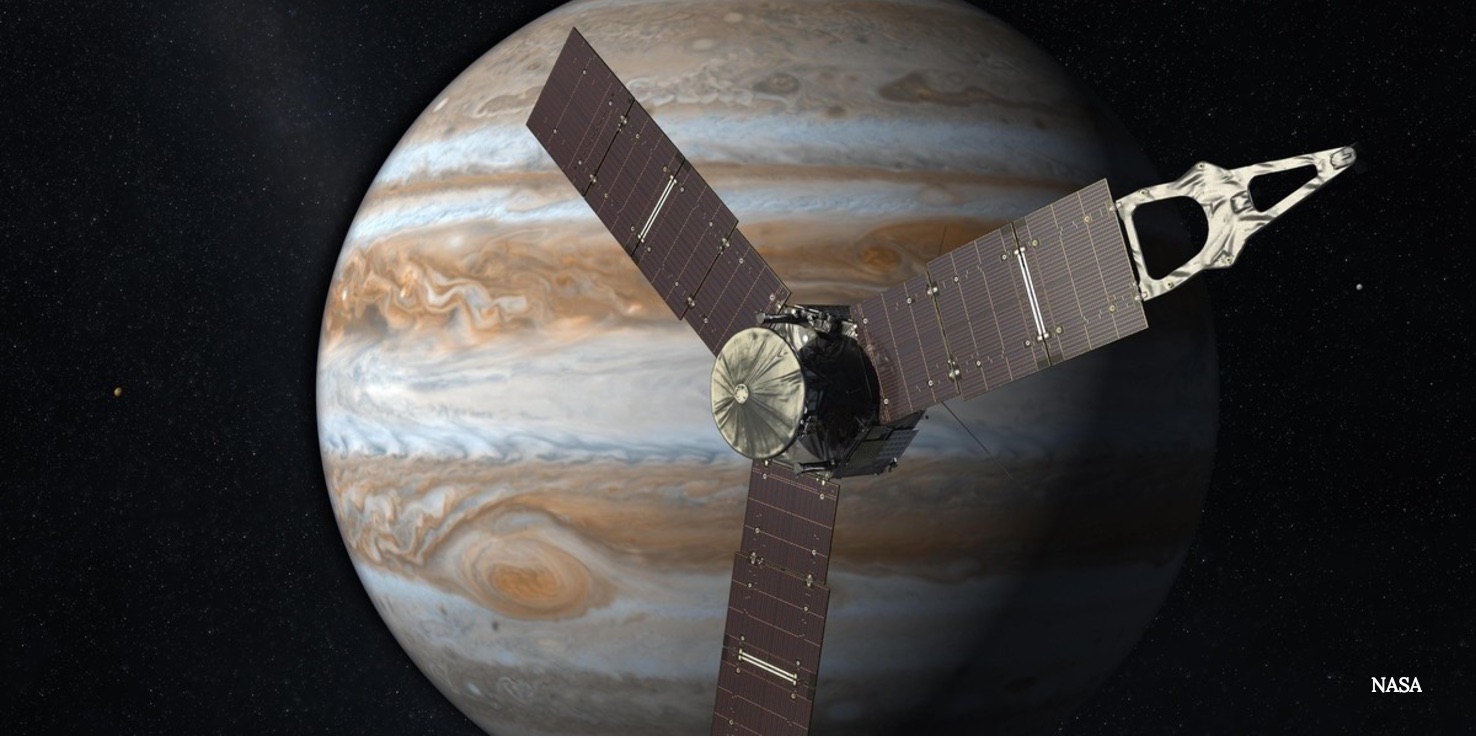Juno Safe Mode Triggered by Instrument Glitch

WASHINGTON — As engineers continue to study an engine issue with NASA's Juno spacecraft, the mission's principal investigator said Dec. 13 that a problem that put the spacecraft into a safe mode in October was related to a problem handling data from one of the spacecraft's instruments.
Juno went into safe mode about 13 hours before an Oct. 19 close approach to Jupiter, the second such approach since Juno entered orbit around the planet in July. The safe mode prevented the spacecraft's science instruments from collecting data during the flyby. Juno exited safe mode five days later.
Speaking at the Fall Meeting of the American Geophysical Union (AGU) in San Francisco, the mission's principal investigator, Scott Bolton of the Southwest Research Institute, said the safe mode was triggered by an issue with transferring data one of the spacecraft's instruments, the Jupiter Infrared Auroral Mapper (JIRAM).
"It went into safe mode and it was related to JIRAM data, the transfer across the bus of the spacecraft," Bolton said. "There was nothing actually wrong with JIRAM and it had to do with something in the spacecraft."
Bolton said that engineers have developed a software patch to correct the problem, but have yet to install on Juno's computers. As a result, JIRAM was not turned on during Juno's latest close approach to Jupiter on Dec. 11. "We didn't want to take a risk that the same thing would happen again," he said, adding that he expected the patch to be installed and JIRAM working on the next flyby in early February.
The Dec. 11 flyby went as planned, with the spacecraft's other instruments working without incident. "We haven't really looked at all the data, except to know that it all worked, and everything's healthy on the spacecraft," Bolton said in remarks at the beginning of a session at the AGU meeting discussing data collected during an August flyby.
Juno remains in a polar orbit around Jupiter with a period of 53.4 days. The mission originally planned to fire the spacecraft's main engine during the October flyby to reduce the period to 14 days. However, a concern about valves in the propulsion system led mission managers to postpone that maneuver several days before the flyby, and that maneuver has yet to be rescheduled.
Get the Space.com Newsletter
Breaking space news, the latest updates on rocket launches, skywatching events and more!
"In theory the engine still works. We have to look at the details of it," Bolton said. However, he and other mission officials emphasized that Juno can collect the same science even if it remains in the 53-day orbit, as it does not affect the quality of the data collected but instead how frequently it is collected.
"What we do not want to do is add any unnecessary risk, so we are moving forward carefully," said Rick Nybakken, Juno project manager at the Jet Propulsion Laboratory, in a Dec. 9 statement. He did not indicate when a decision would be made to either reschedule the maneuver or not perform it at all, leaving Juno in its longer orbit for the remainder of its mission.
"Of course we are all impatient, we would like the data sooner, so that is one argument to shorten the orbit," Bolton said. "But we are safe, we are working."
Debra Werner contributed to this story from San Francisco.
This story was provided by SpaceNews, dedicated to covering all aspects of the space industry.
Join our Space Forums to keep talking space on the latest missions, night sky and more! And if you have a news tip, correction or comment, let us know at: community@space.com.

Jeff Foust is a Senior Staff Writer at SpaceNews, a space industry news magazine and website, where he writes about space policy, commercial spaceflight and other aerospace industry topics. Jeff has a Ph.D. in planetary sciences from the Massachusetts Institute of Technology and earned a bachelor's degree in geophysics and planetary science from the California Institute of Technology. You can see Jeff's latest projects by following him on Twitter.

